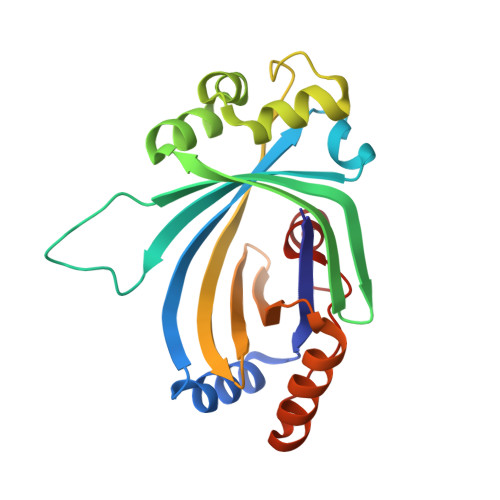Structural Determinants for Substrate Binding and Catalysis in Triphosphate Tunnel Metalloenzymes.
Martinez, J., Truffault, V., Hothorn, M.(2015) J Biological Chem 290: 23348
- PubMed: 26221030
- DOI: https://doi.org/10.1074/jbc.M115.674473
- Primary Citation of Related Structures:
5A5Y, 5A60, 5A61, 5A64, 5A65, 5A66, 5A67, 5A68 - PubMed Abstract:
Triphosphate tunnel metalloenzymes (TTMs) are present in all kingdoms of life and catalyze diverse enzymatic reactions such as mRNA capping, the cyclization of adenosine triphosphate, the hydrolysis of thiamine triphosphate, and the synthesis and breakdown of inorganic polyphosphates. TTMs have an unusual tunnel domain fold that harbors substrate- and metal co-factor binding sites. It is presently poorly understood how TTMs specifically sense different triphosphate-containing substrates and how catalysis occurs in the tunnel center. Here we describe substrate-bound structures of inorganic polyphosphatases from Arabidopsis and Escherichia coli, which reveal an unorthodox yet conserved mode of triphosphate and metal co-factor binding. We identify two metal binding sites in these enzymes, with one co-factor involved in substrate coordination and the other in catalysis. Structural comparisons with a substrate- and product-bound mammalian thiamine triphosphatase and with previously reported structures of mRNA capping enzymes, adenylate cyclases, and polyphosphate polymerases suggest that directionality of substrate binding defines TTM catalytic activity. Our work provides insight into the evolution and functional diversification of an ancient enzyme family.
- From the Structural Plant Biology Laboratory, Department of Botany and Plant Biology, University of Geneva, 1211 Geneva, Switzerland and.
Organizational Affiliation:



















